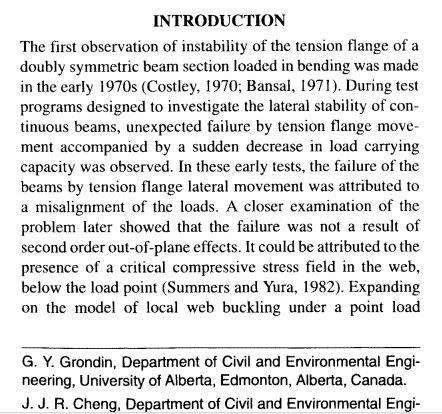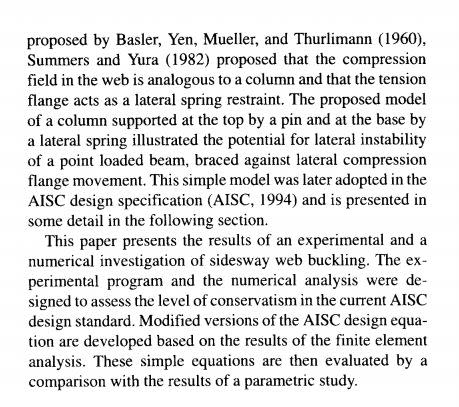I’m looking at doing steel girder roof trusses to frame a 70’x200’ structure. The trusses will be spanning the 70’ dimension, probably 5’ or 6’ to 7’ in depth, and will be spaced at about 20’ on center. The configuration resembles a typical bar joist but with 2 HSS 12x6 top and bottom chords sandwhiching 5” or 6” HSS web members. There are ~10’ top chord cantilever extensions, and with a 1:12 roof slope it makes the truss a little under 100’ in total length. The trusses will be exposed so the plan is to have no bottom chord bracing. I am planning on putting enough concrete on the roof to negate any uplift forces. My 2 concerns are:
1) Are there any concerns with running a truss this long without any bottom chord bracing, even if the bottom chord never goes into compression?
2) Should I anticipate having to provide a splice detail due to shipping limitations? If so, should making the cantilevers separate pieces to limit the total truss length to about 76’ be considered?
1) Are there any concerns with running a truss this long without any bottom chord bracing, even if the bottom chord never goes into compression?
2) Should I anticipate having to provide a splice detail due to shipping limitations? If so, should making the cantilevers separate pieces to limit the total truss length to about 76’ be considered?


